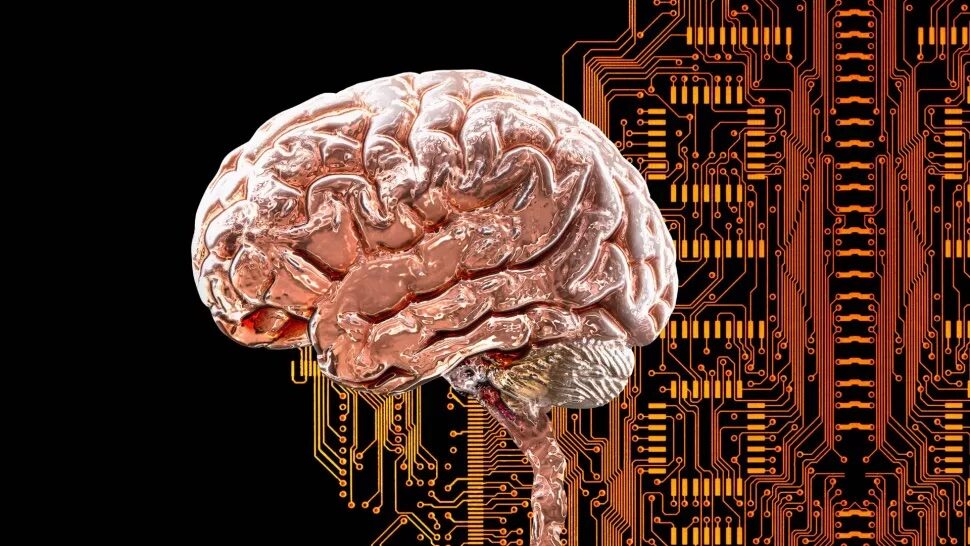
Scientists have uncovered a mysterious network of brain connections that is linked to several psychiatric disorders, including schizophrenia, depression and obsessive-compulsive disorder (OCD).
This shared brain circuitry could help reveal why many patients who are diagnosed with one psychiatric illness also meet the criteria for a second.
"Half of the people we treat meet criteria for more than one disorder," Dr. Joseph Taylor (opens in new tab), clinical director of transcranial magnetic stimulation at the Brigham and Women's Hospital's Center for Brain Circuit Therapeutics in Boston and first author of a study describing the discovery, told Live Science. The study, published Thursday (Jan. 12) in the journal Nature Human Behaviour, supports the idea that disorders that often occur together may stem from the same neurobiological roots.
In total, the study identified six disorders — schizophrenia, bipolar disorder, depression, addiction, OCD and anxiety — that share this underlying circuitry, and "we suspect that other psychiatric disorders may also be linked to the same network," said Taylor, who is also an associate psychiatrist at Brigham and Women's and an instructor in psychiatry at Harvard Medical School.
The newfound circuit is not one that's previously been identified or named by scientists, such as the so-called default mode network and salience network. Some "nodes" in the circuit have been linked to psychiatric disorders in the past, while others have not and are instead linked to key aspects of cognitive function, like selective attention and sensory processing, Taylor said. Unraveling how the circuit works could clarify how deficits in these functions might factor into various psychiatric illnesses and potentially make them likely to occur together.
Crucially, "these data point to the need to consider this shared neurobiology at the circuit level rather than at the level of the individual brain region," said Deanna Barch, a professor of psychological and brain sciences, psychiatry and radiology at Washington University in St. Louis who was not involved in the study. In other words, scientists need to study the brain's wiring, not just the distinct brain structures that all those wires plug into, Barch told Live Science in an email.
To map out this complex wiring, the researchers first pulled data from more than 190 studies of gray matter differences between people with psychiatric disorders and people without psychiatric disorders.
Named for its color, the brain's gray matter is made up of the bodies of brain cells, or neurons, and the uninsulated wiring that extends from those cells. (White matter, by contrast, appears white due to an insulating layer of fat that covers its nerve fibers.) Gray matter is found in the wrinkled outer surface of the brain, the cerebral cortex, as well as in some structures beneath the cortex.
The team pinpointed brain regions where gray matter had atrophied, or shrunk, in the context of psychiatric disorders. Two structures in the cerebral cortex — the anterior cingulate and the insula — cropped up often in these analyses, but in general, the patterns of atrophy were not consistent across the six disorders studied, the team found.
But remarkably, the disorders still had something in common: the tangled network of wires that runs between all these pockets of atrophy in the brain. The team discovered this by placing all of the atrophied gray matter regions within a map of the brain's wiring, known as a "connectome"; a different research team previously constructed this connectome using brain scans from 1,000 people without psychiatric disorders.
All of the atrophied regions hooked up to a common brain network.
"Thus, even when the specific brain regions that show altered gray matter might differ across some disorders, they seem to link to a common circuit across disorders," Barch explained. Although the team identified this physical circuit, they haven't yet determined how signals within the circuit differ between disorders, she added. The question is, are all six disorders linked to similar functional changes within the circuit, as compared with people without psychiatric disorders?
The existing connectome does provide some hints as to how different nodes within the circuit relate to one another. For example, some linked brain regions coordinate activity, meaning when one becomes more active, the other does too, and vice versa; other regions show the opposite relationship, where one region gets quiet as the other lights up.
Once scientists better understand the role of the circuit in different disorders, it may be possible for doctors to treat psychiatric symptoms by tuning activity in one part of the network, Taylor suggested. For example, transcranial magnetic stimulation (TMS) — a noninvasive procedure that uses magnetic fields to stimulate neurons in the brain and has been approved as a treatment for depression, OCD and smoking cessation — could be used to this end.
"Right now, TMS is used for one disorder at a time," Taylor said. But the new study suggests that doctors could potentially identify new TMS targets that would treat multiple disorders at once, by either turning the volume up or down in one part of the circuit.
"It gives you some idea of which direction to push or pull," Taylor said of the research. While TMS treatments for multiple disorders are still theoretical, both Taylor and Barch said such treatments could be possible in the future.
Nicoletta Lanese is a staff writer for Live Science covering health and medicine, along with an assortment of biology, animal, environment and climate stories. She holds degrees in neuroscience and dance from the University of Florida and a graduate certificate in science communication from the University of California, Santa Cruz. Her work has appeared in The Scientist Magazine, Science News, The San Jose Mercury News and Mongabay, among other outlets.



Reader Comments